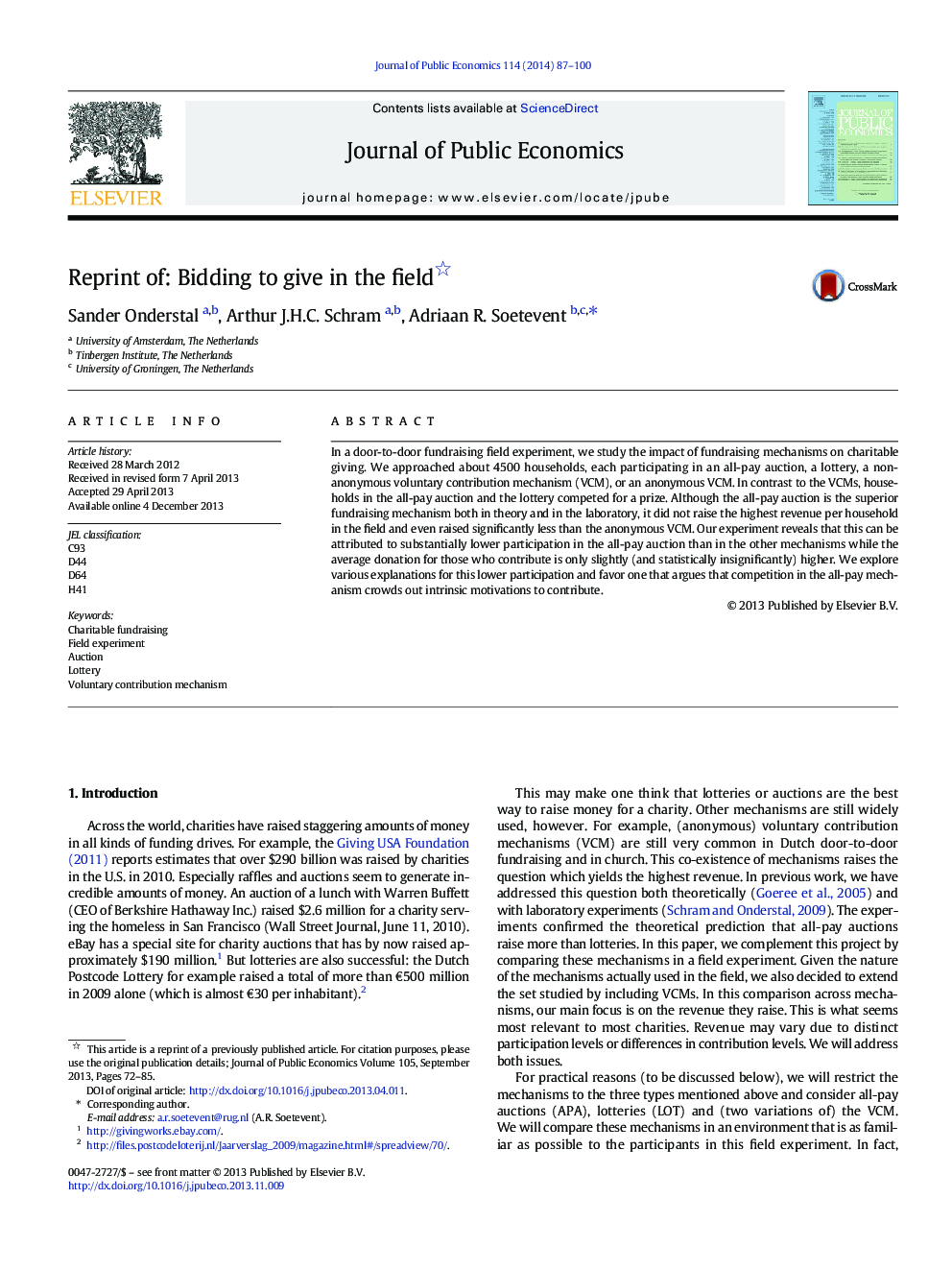| Article ID | Journal | Published Year | Pages | File Type |
|---|---|---|---|---|
| 969130 | Journal of Public Economics | 2014 | 14 Pages |
•We study fundraising mechanisms in a door-to-door fundraising field experiment.•The all-pay auction (APA) is the superior mechanism in theory and in the lab.•In contrast, we find VCMs and a lottery to perform at least as well in the field.•This results from lower participation in APA than in the other mechanisms.•Competition in APA seems to crowd out intrinsic motivations to contribute.
In a door-to-door fundraising field experiment, we study the impact of fundraising mechanisms on charitable giving. We approached about 4500 households, each participating in an all-pay auction, a lottery, a non-anonymous voluntary contribution mechanism (VCM), or an anonymous VCM. In contrast to the VCMs, households in the all-pay auction and the lottery competed for a prize. Although the all-pay auction is the superior fundraising mechanism both in theory and in the laboratory, it did not raise the highest revenue per household in the field and even raised significantly less than the anonymous VCM. Our experiment reveals that this can be attributed to substantially lower participation in the all-pay auction than in the other mechanisms while the average donation for those who contribute is only slightly (and statistically insignificantly) higher. We explore various explanations for this lower participation and favor one that argues that competition in the all-pay mechanism crowds out intrinsic motivations to contribute.
